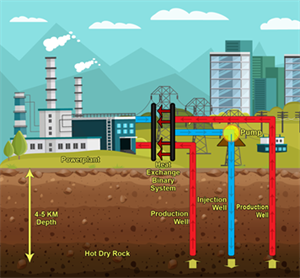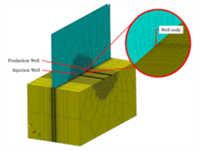
Exploiting geothermal power is easy in volcanic regions like Iceland, where geology brings heat from the Earth’s core close to the surface. In other places, however, accessing this source of renewable energy requires enhanced geothermal systems (EGS).
These systems use a network of channels created by hydraulic fracturing. Water pumped down one borehole extracts heat from rocks a kilometre or more underground as it travels through those channels and then brings it to the surface via a second borehole. While the concept is simple, modelling it gets a little complicated.
WISE researchers Robert Gracie and Bruce Gee tackled that problem. The duo focussed on solving the differential equations that predict how four key geothermal processes interact with each other and change over time: heat transfer within the rock; heat transfer within the fluid; how fluid flows through the rock; and deformation of the rock.
Their goal was to determine which approaches to solving these equations can accurately simulate EGS processes without requiring too much computer power. To do that, they examined two monolithic approaches that attempt to solve all equations at once, two sequential approaches that tackle equations one at a time, and a hybrid “loosely coupled” scheme.
Their results revealed that a monolithic approach provides the best method for simulating EGS processes, achieving more accuracy with less computing power. Although there’s still more work required to understand EGS behaviour, their insight takes us one step closer to harnessing the huge stores of renewable geothermal power that lie under our feet.
Researchers: Robert Gracie and Bruce Gee
Partners: Natural Sciences and Engineering Research Council, Ontario Ministry of Research and Innovation
Source: Gee, B., & Gracie, R. (2021). Comparison of fully-coupled and sequential solution methodologies for enhanced geothermal systems. Computer Methods in Applied Mechanics and Engineering, 373, 113554, 1-30.